|
The Bridewell, Cork City
By Garda Leslie Rice
Prior to Irish Independence, most towns throughout the country had places of detention, or Bridewells as they were called. During the War of Independence and the Civil War these buildings, regarded by the population as symbols of repression were destroyed. Today, only two Bridewells, those of the cities of Cork and Dublin, are in use today. The Bridewell in Tarbert, County Kerry, has recently been restored and turned into a heritage centre.
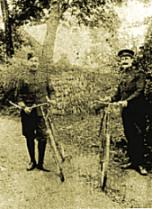 In the reign of King Charles I, a hostel for the accommodation of homeless boys and "ladies of the night" was established at St Bride's Well in London. As time went by the use to which this hostel was put underwent a change, it became a "house of correction" or place of detention. The name was shortened to "Bridewell", subsequently, similar "houses of correction" in Ireland and the British Isles were given this name.
In the reign of King Charles I, a hostel for the accommodation of homeless boys and "ladies of the night" was established at St Bride's Well in London. As time went by the use to which this hostel was put underwent a change, it became a "house of correction" or place of detention. The name was shortened to "Bridewell", subsequently, similar "houses of correction" in Ireland and the British Isles were given this name.
Cork's Bridewell is located at the junction of Cornmarket Street and Kyrl's Street, in the city centre. It is quite close to the north channel of the River Lee and almost on the line of the old city wall. The building itself is a relatively modern one but the site it occupies has been associated with a "Bridewell" since 1731.
In 1717, when Cork was still a small walled city, one of its prosperous businessmen, John Dennis began to broaden the scope of his empire by developing land outside the walls. This land was a muddy, riparian stretch, part of the ancient estate of Maurice Roche and is described in the title-deeds as wasteland or "bogg", being 205 feet in length. Interestingly, it was known as "Monymucke" which can be translated as "the bogland of the pigs".
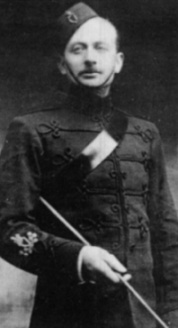
In 1719 John Dennis acquired this stretch of river-side ground and commenced to construct new quays. He soon became embroiled in a disquiet with the city's Corporation (local government) who felt that the businessmen was encroaching beyond his entitlements. As part of the eventual settlement Dennis was required to surrender ninety feet of ground at the north-west known as the Potato Quay where the Corporation was to build a "Bridewell", with a five feet-wide passage between it and the city wall.
The Bridewell was formally commissioned on the 13th September 1731 and comprised of four rooms without yards. The stone used in the construction came from the older Debtors' Gaol. The left-hand side of the ground-floor was a long work-house with two cells, used as a "house of correction". The remainder of the building was to be utilised as the Corporation saw fit. Thirteen classes of prisoners were housed, including male and female debtors.
Between the years 1750 and 1810 the appearance of Cork altered radically as many new streets were built, some of them along the lines of old water-courses which had criss-crossed the marshy ground but were now either filled in or culverted. One of these channels became the present Cornmarket Street, a renowned open-air street-market known locally as the "Coal Quay".
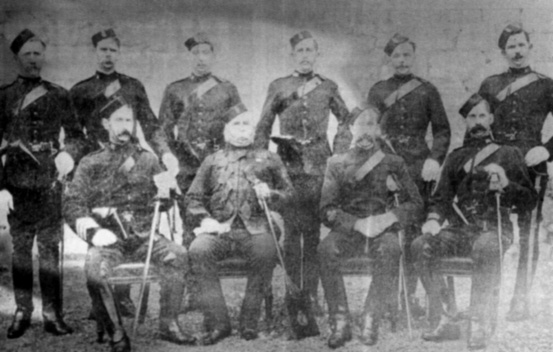
An entry in Lang's Cork Directory of 1868 list the staff of the Bridewell, Cornmarket Street:
| Local Inspector: | James C. Perry |
| Chaplain: | Rev. W.C. Nelligan, C.C.D. |
| R.C. Chaplain: | Rev. C. Murphy |
| Marshall: | Howard Rice |
| Physician: | W. Beamish |
| Apothecary: | W. Jones |
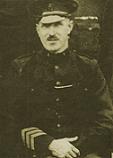
Very little is known about the R.I.C. men who were based in the Bridewell during the following decades because most of the station-records were destroyed during "The Troubles"!
On one occasion, during "The Traitors' Riots" which Cork City experienced in the 1870's, the Bridewell was besieged by a mob who attempted to storm the building. The attack was repulsed when police reinforcements from other city stations under Head-Constable McLeod, augmented by mounted Dragoons baton-charged the crowd. Somewhat ironically, casualties on both sides were treated in the Bridewell by Mr. Beamish, Physician.
Lang's Cork Directory, Guy's Cork Directory and Purcell's Almanac furnish some important details on membership of Bridewell station-parties between 1880 and 1920. These are as follows:
| Year | Head Constable | Sergeant i/c | Others |
| 1880-1885 | Not Listed | H.C. Stewart | McNeill (P.C.)
Murphy (P.C.) |
| 1886-1891 | Not Listed | Patrick Sorohan | Not Listed |
| 1892-1902 | David Smith | Patrick Doyle | Sheehan (P.C.) |
| 1903-1905 | William Hughes | John Grey | Not Listed |
| 1906-1908 | Richard Watchorn | John Grey | Bryan (P.C.)
Kealy (P.C.) |
| 1909-1912 | John Foster | John Grey | Not Listed |
| 1913-1919 | William Butler | John Grey | Smyth (P.C.) |
| 1920 | Jeremiah Nestor 55971 | McCoy
Patrick O'Brien | Flynn (Sgt.)
Curran (Sgt.)
John Russell (P.C.) |
During the War of Independence Cork was a hive of activity with daily shootings and arrests. Many of the detainees were lodged in the Bridewell initially but this practice ceased when two men succeeded in escaping by the simple expedient of removing stones from one of the walls. The building almost 200 years old was crumbling and no longer secure.
Following the signing of the Treaty in December 1921, there was a serious break-down of law and order in Cork City. Many barracks had been sacked while others had been handed over to a group known as the Irish Republican Police, who wore an identifying arm-band with the letters I.R.P. They operated from barracks on the North Mall. The Corporation established its own unarmed police force known as the C.C.P. or City of Cork Police. The R.I.C. were no longer regarded as having any authority but, pending final disbandment, still occupied some barracks. Meanwhile plans were well in train to form a new National police force and by March, 1922 recruits were already in training.
The final evacuation of the Bridewell by the Royal Irish Constabulary took place on Wednesday, the 12th April, 1922. An Inspector Riordan from Union Quay and Station-Sergeant McCoy met with I.R.A. officers in Cornmarket Street. An inventory of the station property was made and the building was handed over at 11:30 a.m. A similar operation was then conducted at Tuckey Street and Union Quay barracks. These were the last three R.I.C. barracks in the country to be evacuated.
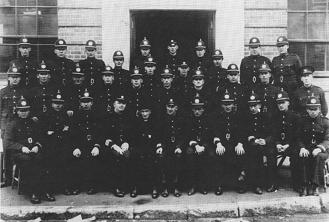 Some time after it had been vacated the Bridewell was ransacked and burned down. The ruins were finally demolished in 1924 and construction of a new Garda Station on the same site was begun in 1926. The new Bridewell was completed in 1932 and officially opened in the same year, the first custom built Garda Station to be built by the Irish Free State Government. The station-party was made up of an inspector, four sergeants and about fifty Gardaí, most of whom lived in the station. Sergeant Ned Ryan was the new Sergeant-in-Charge.
Some time after it had been vacated the Bridewell was ransacked and burned down. The ruins were finally demolished in 1924 and construction of a new Garda Station on the same site was begun in 1926. The new Bridewell was completed in 1932 and officially opened in the same year, the first custom built Garda Station to be built by the Irish Free State Government. The station-party was made up of an inspector, four sergeants and about fifty Gardaí, most of whom lived in the station. Sergeant Ned Ryan was the new Sergeant-in-Charge.
During "The Emergency" (World War II) a detachment of the Local Security Force which was formed in 1940 as an auxiliary force to assist the regular army operated from the Bridewell. Their duty was to patrol areas of Cork City keeping an eye-out for foreign aircraft or other signs of an impending invasion. The L.S.F. was disbanded after the war.
In the 1970's the Bridewell underwent a considerable amount of refurbishment. Cell accommodation was increased and the lay-out of the reception area on the ground-floor was altered and modernised. Today, given its continuing status as a "house of correction" and its proximity to the city-centre it is very much a bustling, modern Garda station. However, the old wall of Cork lies only a matter of feet from the rear of the building: The River Lee flows as it has done for aeons, past the front door. Consequently in the Bridewell, there is always an awareness of the past and a realisation that this little corner of Cork represents a unique strand in the broad and colourful tapestry of the City's History.
This article has been reproduce here by kind permission of Garda Leslie Rice (the author) and Brendan Colvert of the International Police Association - Irish Section and editor of the "Garda Journal". This article was published in the Spring 1994 "Police Friendship" magazine (The journal of the International Police Association - Irish Section), Vol.7, No. 1, pages 27-33
Copyright © Spring 1994 "Police Friendship"
|